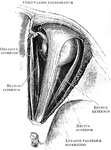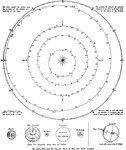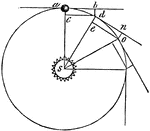Clipart tagged: ‘Orbit’

Annual Parallax
"Suppose a to be a stationary celestial object, then as the Earth makes her annual revolution around…
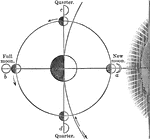
Cause of the Phases of the Moon
During new and full moon, the earth, moon, and sun are all in the same straight line, but, that during…
Earth's Axis Perpendicular to Plane of Orbit
"The earth shown as it would be if its axis were perpendicular to the plane of the orbit." -Wiswell,…
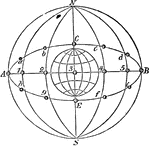
Suns in the Equator and Ecliptic
"Were the Earth's orbit a perfect circle, and her axis perpendicular to the plane of this orbit, the…

Elliptical Orbit
"The elliptical circle being supposed to be the Earth's orbit, with the Sun, S, in one of the foci.…
Spring Equinox and Autumn Equinox
"Relative positions of the earth and the sun on March 21 (spring equinox) and September 21 (autumn equinox)…
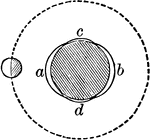
Lunar Tide
If the earth were uniformly covered with a layer of water, the passage of the moon over any place as…

Moon Phases
"Let S be the Sun, E the Earth, and A, B, C, D, F, the Moon in different parts of her orbit. Now when…

Arrangement of Orbital Muscles
Transverse vertical section through the orbit behind the eyeball to show the arrangement of muscles.

The Skull of a Paddle-Fish with the Beak Removed
"Skull of Spatularia, with the long beak removed, the anterior (asc) and posterior (psc) semicircular…

Planet Distance
"Relative distance of the Planets. Having now given a short account of each planet composing the solar…
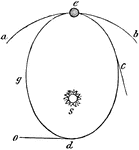
Planet Motion
"Elliptical Orbits.—It has been supposed that the Sun's attraction, which constitutes the Earth's…

Positions
The flood tides are the highest, and the ebb tides are the lowest. These are called spring tides.…

Seasons from Earth's Orbit
"Relative positions of the earth and the sun during the spring equinox, the summer solstice, the autumn…

Summer Solstice
"Relative positions of the earth and the sun on June 21, the summer solstice. Summer and long days north…

Winter Solstice
"Relative positions of the earth and the sun on December 21, the winter solstice. Winter and short days…

